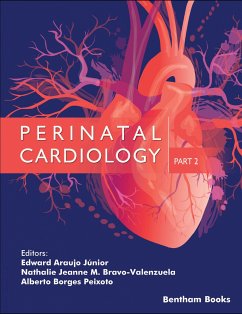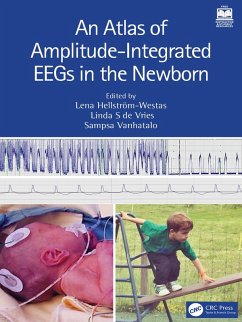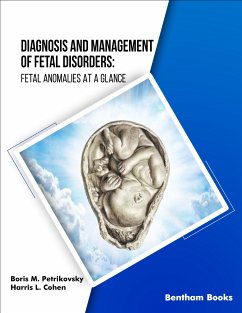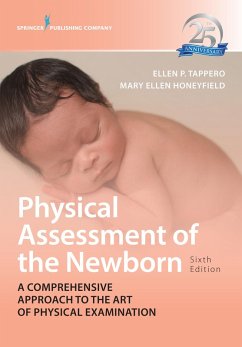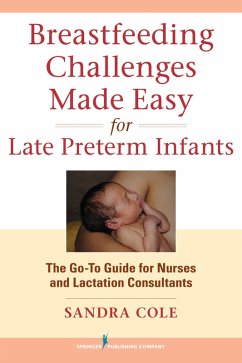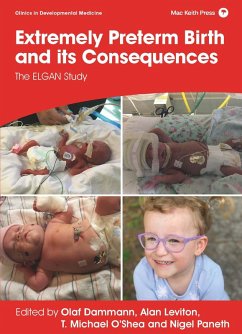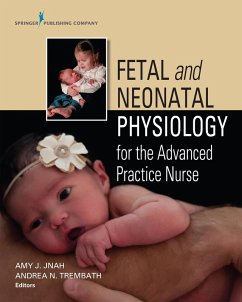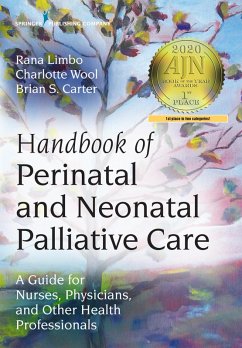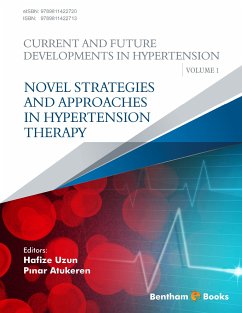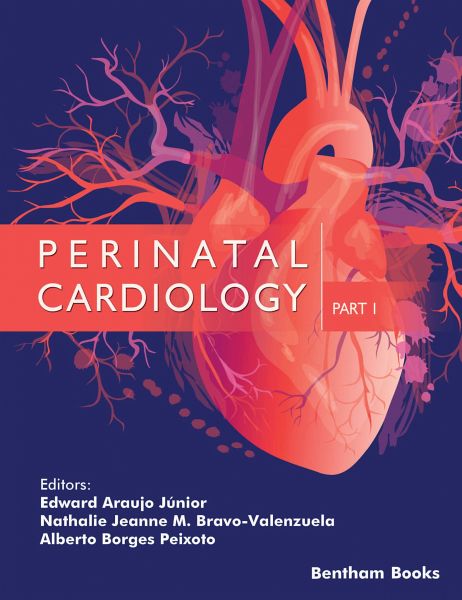
Perinatal Cardiology Part 1 (eBook, ePUB)

PAYBACK Punkte
0 °P sammeln!
In Perinatal Cardiology, fetal cardiology experts providekey information on tools for fetal evaluation through echocardiography /cardiac ultrasonography, with a primary focus on the nature and prenataldetection of structural and functional cardiac heart defects (CHDs). In this two-partbook, readers will find details about different types of fetal cardiacabnormalities along with important updates on the diagnosis, management,planning delivery, and postnatal treatment in CHD cases. This information issupplemented with guidelines for the clinical management of patients with a fetusaffected by car...
In Perinatal Cardiology, fetal cardiology experts providekey information on tools for fetal evaluation through echocardiography /cardiac ultrasonography, with a primary focus on the nature and prenataldetection of structural and functional cardiac heart defects (CHDs). In this two-partbook, readers will find details about different types of fetal cardiacabnormalities along with important updates on the diagnosis, management,planning delivery, and postnatal treatment in CHD cases. This information issupplemented with guidelines for the clinical management of patients with a fetusaffected by cardiovascular defects, and surgical procedures in neonates. Key Features: -presents information gathered by experts in perinatal cardiology,organized into 26 topic-based chapters- explores the cardiac development, fetal cardiovascular hemodynamics,genetic and environmental factors associated with congenital heart defects(CHD), perinatal management, planning delivery, and postnatal treatment ofnewborns with CHD- presents information about normal cardiac functions and heart defects to give readers a clear and detailed picture of abnormal cardiac function- presents information about perinatal ultrasound physiology- gives practical guidelines for ultrasound and echography parametersrequired for evaluating fetal heart anatomy and diagnosing diseases- includes a new system of classifying prenatal CHDs based on thestratification of the risk level of care- features a straightforward and accessible style of presentationsuitable for all readers- provides references in each chapter for further reading Part 1 of this two-part set covers the basics of perinatal cardiology which chapters that introduce readersto CHD classification, fetal heart and placental physiology and pathology, diagnosisof fetal cardiac malposition and anomalies and some congenital heart defects suchas septal defects, cardiac anomalies of the left and right sides, conotruncalanomalies and aortic arch anomalies. Perinatal Cardiology is an essential reference for postgraduatemedical students seeking to improve their knowledge of fetal and pediatriccardiology as part of their residency and professional training. The bookequips readers with the information necessary to understand the role of theperinatal cardiologist and goes further to facilitate the ability to performadequate risk assessments for fetal CHD.
Dieser Download kann aus rechtlichen Gründen nur mit Rechnungsadresse in A, B, BG, CY, CZ, D, DK, EW, E, FIN, F, GR, H, IRL, I, LT, L, LR, M, NL, PL, P, R, S, SLO, SK ausgeliefert werden.




